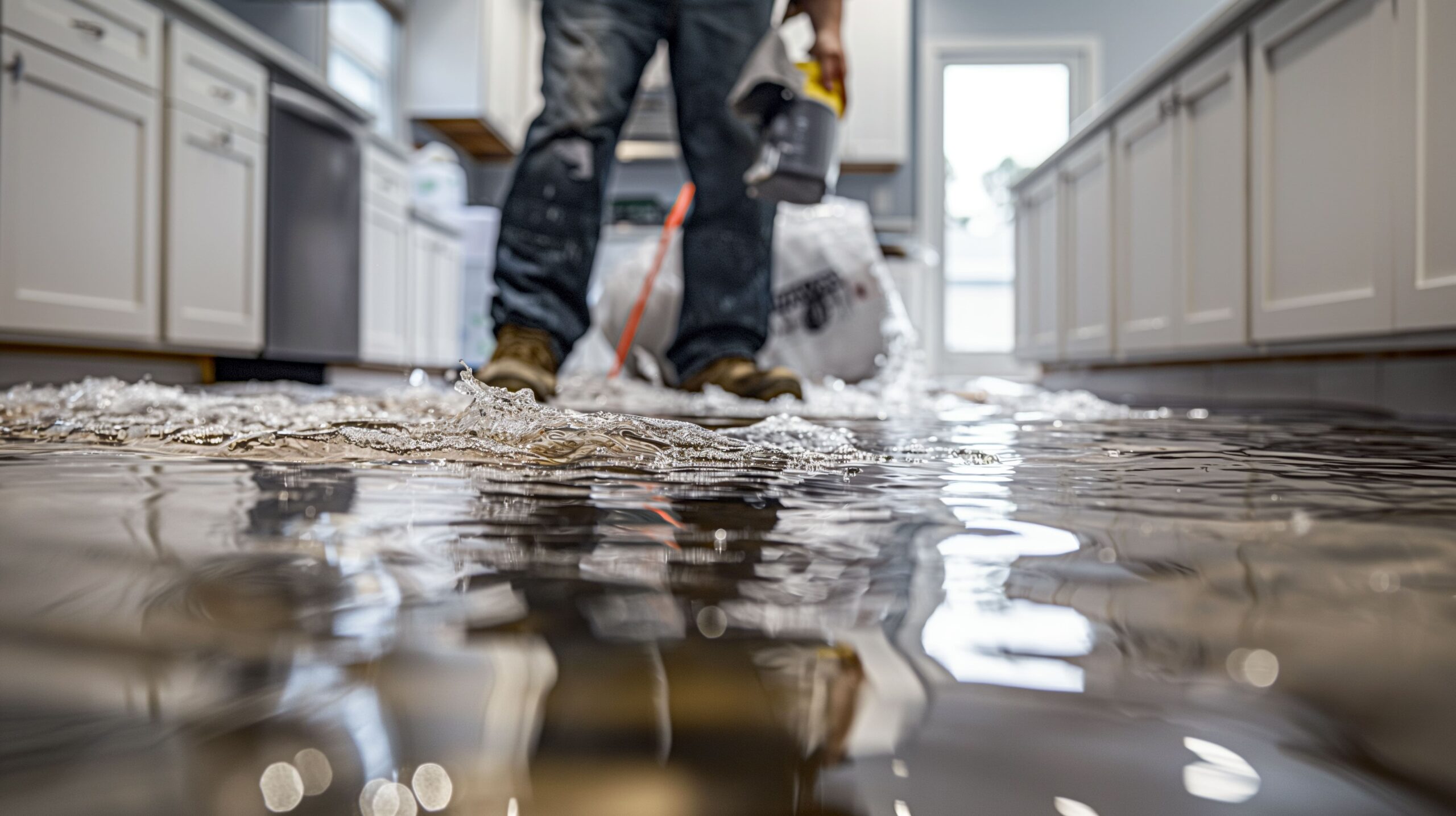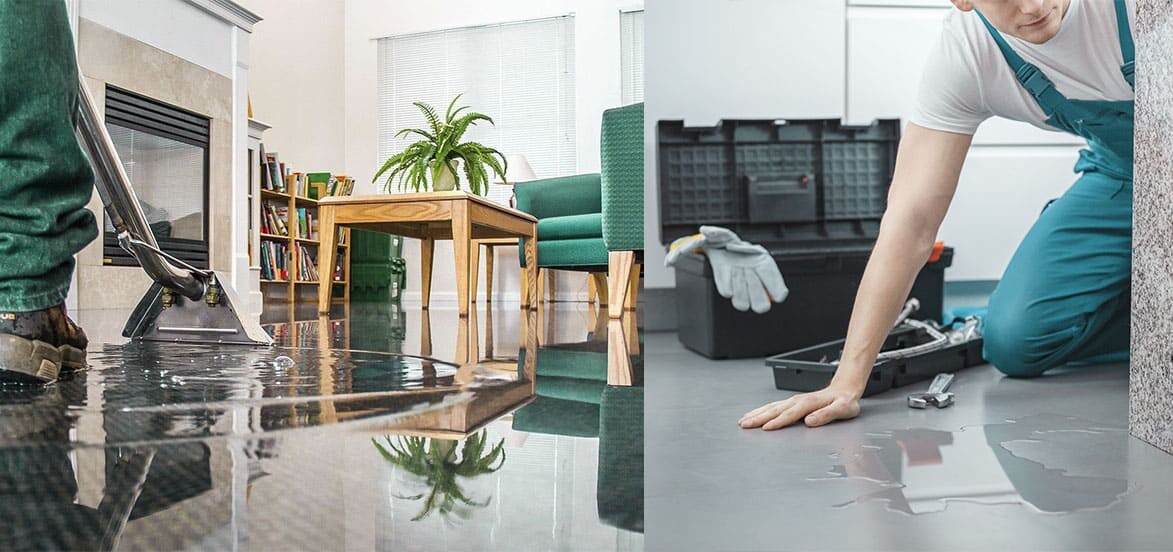Water Damage Restoration 101: Comprehending the Process and Cost
Water damage can strike all of a sudden, leaving house owners in a state of confusion. Recognizing the remediation procedure is vital for effective recovery. From reviewing the damage to selecting the appropriate provider, each step affects the overall end result and price. Aspects such as the kind of water damage and seriousness also play a significant function. What are the details methods made use of in restoration, and exactly how can one plan for prospective expenses?
Kinds Of Water Damage

Initial Evaluation and Examination

Water Extraction Methods
Complying with the preliminary analysis, efficient water extraction strategies are utilized to mitigate damage and stop more problems. These strategies include making use of customized tools such as industrial-grade vacuum cleaners and completely submersible pumps - Water Extraction And Drying. The choice of method depends on the quantity of water existing and the kind of products affected. For standing water, submersible pumps are normally utilized for quick elimination, while vacuums are ideal for extracting water from carpetings and upholstery. Additionally, progressed techniques like water removal mats may be employed for hard-to-reach locations - Water Damage Restoration. The objective is to eliminate as much water as possible, lessening the capacity for mold and mildew development and architectural damage. Motivate and reliable water extraction is vital in the total water damage reconstruction process
Drying and Dehumidification Process
Once the water removal is complete, the drying and dehumidification procedure ends up being essential to restoring the affected area. This phase usually utilizes industrial-grade dehumidifiers and air movers to successfully minimize dampness degrees. The dehumidifiers attract damp air, getting rid of excess humidity, while air movers distribute air to speed up evaporation. Tracking tools is frequently used to track moisture and temperature levels, ensuring optimal drying conditions. The period of this procedure can vary depending upon the degree of the water damage and environmental variables. It is crucial to completely dry all impacted products, including More Help wall surfaces, floor covering, and home furnishings, to stop mold growth and structural damage. Correct implementation of this action is essential for a successful repair end result.
Cleansing and Disinfecting Affected Areas
An extensive preliminary assessment and examination of influenced locations is vital to recognize contamination degrees once the drying process is total. Water Damage Restoration. Effective cleaning strategies and suitable products should then be employed to eliminate debris and discolorations. Ultimately, sanitization and sanitation methods are vital to ensure that harmful virus are eliminated, bring back the room to a risk-free problem
Initial Analysis and Examination
Prior to beginning any kind of repair initiatives, a comprehensive preliminary analysis and evaluation of the affected locations are essential for effective cleaning and sterilizing. This process involves recognizing the level of water damage, identifying the resource of the water intrusion, and assessing the materials impacted. Assessors commonly try to find signs of mold and mildew growth, structural honesty concerns, and damaged possessions. The analysis additionally consists of inspecting dampness levels utilizing customized tools to guarantee no surprise water pockets stay, as these can bring about further problems. Documenting the findings is vital for preparing the following steps in the remediation process. A comprehensive first analysis makes it possible for remediation specialists to devise a targeted method for efficient cleansing and sterilizing, inevitably minimizing damage and health dangers.
Cleaning Up Techniques and Products
Reliable cleaning and disinfecting of water-damaged locations need a variety of techniques and items customized to the certain materials affected. For permeable surface areas like drywall and carpets, removal techniques are important to remove excess dampness, followed by deep cleansing with specialized detergents. Non-porous products such as ceramic tile or metal can be cleaned making use of commercial-grade cleaners that properly get rid of pollutants. Heavy steam cleaning is an additional effective strategy, specifically for carpetings and upholstery, as it uses high temperatures to eliminate germs and mold and mildew (Water Damage Restoration). Additionally, environment-friendly items are increasingly prominent for their safety and security and effectiveness - Water Damage Restoration. Eventually, picking the appropriate cleaning methods and products not just assures prompt sanitation yet additionally help in protecting against more damage and wellness threats connected with water breach
Sanitization and Disinfection Methods
When resolving water damage, correct sanitization and disinfection methods are important to guarantee the safety and health and wellness of the damaged environment. After preliminary cleansing, surfaces need to be treated with appropriate anti-bacterials to remove virus, mold, and bacteria that prosper in moist conditions. Common methods include making use of EPA-approved chemical disinfectants, which can be applied through splashing or cleaning strategies. Additionally, ultraviolet (UV) light systems can properly disinfect areas by neutralizing microorganisms without severe chemicals. The selection of approach often depends upon the sort of products influenced and the level of contamination. Ultimately, extensive sanitization not just brings back a risk-free space however additionally aids stop future health and wellness risks associated with lingering dampness and mold and mildew development.

Repair Work and Restoration Options
Reviewing the damage triggered by water exposure is vital for establishing the proper fixings and repair alternatives. House owners might deal with various issues, including harmed drywall, warped flooring, and jeopardized architectural components. Depending on the degree of the damage, repair services might entail replacing sections of drywall, setting up brand-new floor covering, or enhancing structural beams. In cases of serious damage, total replacement of damaged products may be essential. Additionally, specialist restorers commonly recommend making use of moisture meters to analyze covert moisture levels before picking the very best strategy. It is necessary to act without delay to avoid mold and mildew growth and additional degeneration. Picking the best choices not only restores the residential property however also assures long-lasting safety and performance.
Elements Affecting Restoration Expenses

The level of water damage directly affects the reconstruction sets you back home owners can anticipate to sustain. Variables such as the resource of the water, the period of exposure, and the affected materials substantially affect pricing. Tidy water damage from a damaged pipeline is usually less pricey to restore compared to damage triggered by sewer. Furthermore, the level of contamination dictates the need for specialized cleaning and disposal services, further enhancing costs. Geographic place additionally plays a function, as local labor prices and availability of reconstruction solutions can differ. The urgency of the reaction impacts expenses; quicker interventions typically lead to lower overall costs by protecting against further damage. Comprehending these factors is vital for homeowners when approximating restoration costs.
The 3 main kinds of water damage are categorized based on contamination degrees: tidy water, gray water, and black water. A thorough initial assessment and examination are important steps in the water damage restoration procedure. For standing water, submersible pumps are generally made use of for fast removal, while vacuum cleaners are ideal for extracting water from carpetings and upholstery. The degree of water damage directly affects the repair sets you back house owners can anticipate to sustain. Clean water damage from a broken pipe is generally less pricey to restore contrasted to damage triggered by sewage.